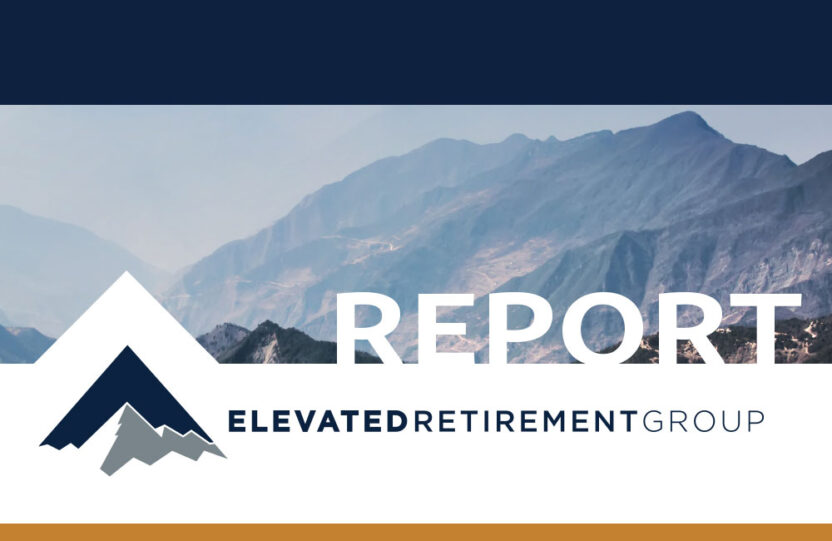
Report: Secure Act of 2019
SECURE ACT OF 2019
The Setting Every Community Up for Retirement Enhancement Act, or the SECURE Act, was passed by Congress in December 2019. This legislation is effective as of January 1, 2020. The law does the following:
Top 3 items to know for individuals:
1. Allow taxpayers of any age to make traditional IRA contributions – Currently, anyone that has reached age 70 ½ is not eligible to make those contributions.
2. Increase the age at which Required Minimum Distributions (RMDs) begin – Currently, it is age 70 ½. The new law would make it age 72.
3. Eliminate the “Stretch-IRA” with life expectancy payments for most beneficiaries of IRAs and Qualified retirement plans, and subject those beneficiaries to a new “10-year rule” – Only 1) surviving spouses, 2) disabled or chronically ill individuals, 3) beneficiaries that are not more than 10 years younger than the decedent, and 4) minor children would still be able to use life expectancy payments. All other beneficiaries would need to distribute the full account balances by the end of the tenth year following the year of death.
Top 3 items to know for businesses:
4. Increase access to Multiple Employer Plans (MEPs) for small businesses and improve the quality of MEP service providers – MEPs make the startup and administrative costs for retirement plans much more affordable for small employers and reduce investment costs for participants.
5. Change the maximum service requirement restriction employers can place on employees to participate in 401(k) and profit-sharing plans – Currently the maximum restriction is at least one year with at least 1,000 hours. The new law would allow all employees with three consecutive years with at least 500 hours in each to participate as well.
6. Move the deadline for establishing 401(k) and profit-sharing plans to the tax filing deadline plus extensions – Currently, those types of plans need to be established by December 31st of a tax year, in order to make contributions for that tax year. The new law would make the deadline the same as is currently in place for SEP IRA plans.
All other items for individuals:
7. Allow stipends and non-tuition fellowship payments to be used as income for IRA contribution eligibility – The purpose is to expand the definition of eligible earned income to allow for more contributions.
8. Prohibit the distribution of qualified retirement plan loans through credit cards or similar arrangements – The purpose is to ensure that plan loans are not used for routine or small purchases.
9. Increase the portability of qualified retirement plans to different lifetime income options (annuities) – The purpose is to encourage the use of annuities to promote lifetime income streams rather than lump sum distributions.
10. Provide more clear guidance on the treatment of participant custodial accounts from a terminated 403(b) plan – The guidance is supposed to be available no later than six months from enactment and will be retroactively effective for tax years 2019 and later.
11. Provide more clear guidance who may be covered by retirement plans maintained by church- controlled organizations – The guidance provides clear definitions of eligible employees in these types of organizations.
12. Provide penalty-free distributions for qualified birth and adoption events – The purpose is to help households that are financially distressed due to an increase in dependents.
13. Allow “difficulty of care” payments to home healthcare workers to be counted as compensation for purposes of making retirement plan and IRA contributions – The purpose is to expand the definition of eligible earned income to allow for more contributions.
14. Establish required disclosures about life-time income facilitated by purchasing annuities with accumulated benefits in qualified retirement plans – The disclosures would need to be provided once every twelve months and would be used to educate participants on what their savings would provide as annual payment streams if taken as annuity payments.
15. Modify nondiscrimination rules to protect older, longer service participants and allow them to continue to accrue benefits – is provision softens the rules that would normally restrict older, more experienced workers from receiving larger contributions closer to retirement.
16. Reinstate for one year the income exclusions for benefits and reimbursements paid to members of volunteer emergency response organizations – The purpose is clearly to encourage volunteering in these types of organizations.
17. Expand the use of 529 plans to cover costs of registered apprenticeships, homeschooling, up to $10,000 of qualified student loan payments (including siblings), and private elementary, secondary, or religious schools – The purpose is to make 529 plans even more useful.
18. Increase the penalty for failure to file tax returns to the lesser of $400 or 100 percent of the amount of the tax due – The purpose is to provide more tax revenue.
All other items for businesses:
19. Increase the cap from 10% to 15% on employee deferral percentage taken through automatic enrollment programs – The purposes are to encourage automatic enrollment provisions in employer plans and to increase the effectiveness of those provisions.
20. Simplify Safe Harbor 401(k) rules and provide greater flexibility and benefits to participants – The purpose is to make Safe Harbor plans easier to administer and allow more contributions on the behalf of participants.
21. Increase the credit limitation for small employer retirement plan start-up costs – The new law would make the eligible credit equal the greater of $500 or a second factor (which is the lesser of $250 times the number of non-highly compensated eligible participants or $5,000). The credit would apply for up to three years.
22. Introduce a new credit for small employers that implement automatic enrollment into their 401(k) plans and SIMPLE IRA plans – The new credit would be up to $500 and would apply for up to three years.
23. Provide relief to community newspaper companies struggling to fund pension plans – The purpose is to help community newspaper employers by reducing the required contributions to their pension plans.
24. Direct the IRS and the DOL to institute the ling of consolidated Form 5500s for groups of plans with the same trustee, the same named fiduciary under ERISA, and the same administrator using the same plan year, and providing the same investments or investment options to participants and beneficiaries – The purpose is to make the administration of retirement plans easier and less expensive.
25. Provide a Safe Harbor for plan sponsors regarding the fiduciary rule when selecting lifetime income providers – is not able to satisfy the obligations to the participants.
26. Modify the Pension Benet Guaranty Corporation (PBGC) premiums for Cooperative and Small Employer Charity (CSEC) plans – The purpose is to reduce administrative costs for plans sponsored by these types of non-profit organizations.
27. Increase the penalty for failure to file retirement plan returns and required notices – The purpose is to provide more tax revenue.
a. Form 5500 – penalty increased to $105 per day, not to exceed $50,000
b. Registration Statement – penalty of $2 per participant per day, not to exceed $10,000
c. Notification of Change – penalty of $2 per day, not to exceed $5,000
d. Withholding Notice – penalty of $100 for each failure, not to exceed $50,000
28. Increase information sharing between the IRS and U.S. Customs and Border Protection for purposes of administering and collecting the heavy vehicle use tax – The purpose is to provide more tax revenue.
Investment Advisory Services Offered Through Elevated Capital Advisors, LLC, an SEC Registered Investment Advisor
*For the full details and status of the act, please see this website: https://www.congress.gov/bill/116th-congress/house-bill/1994

